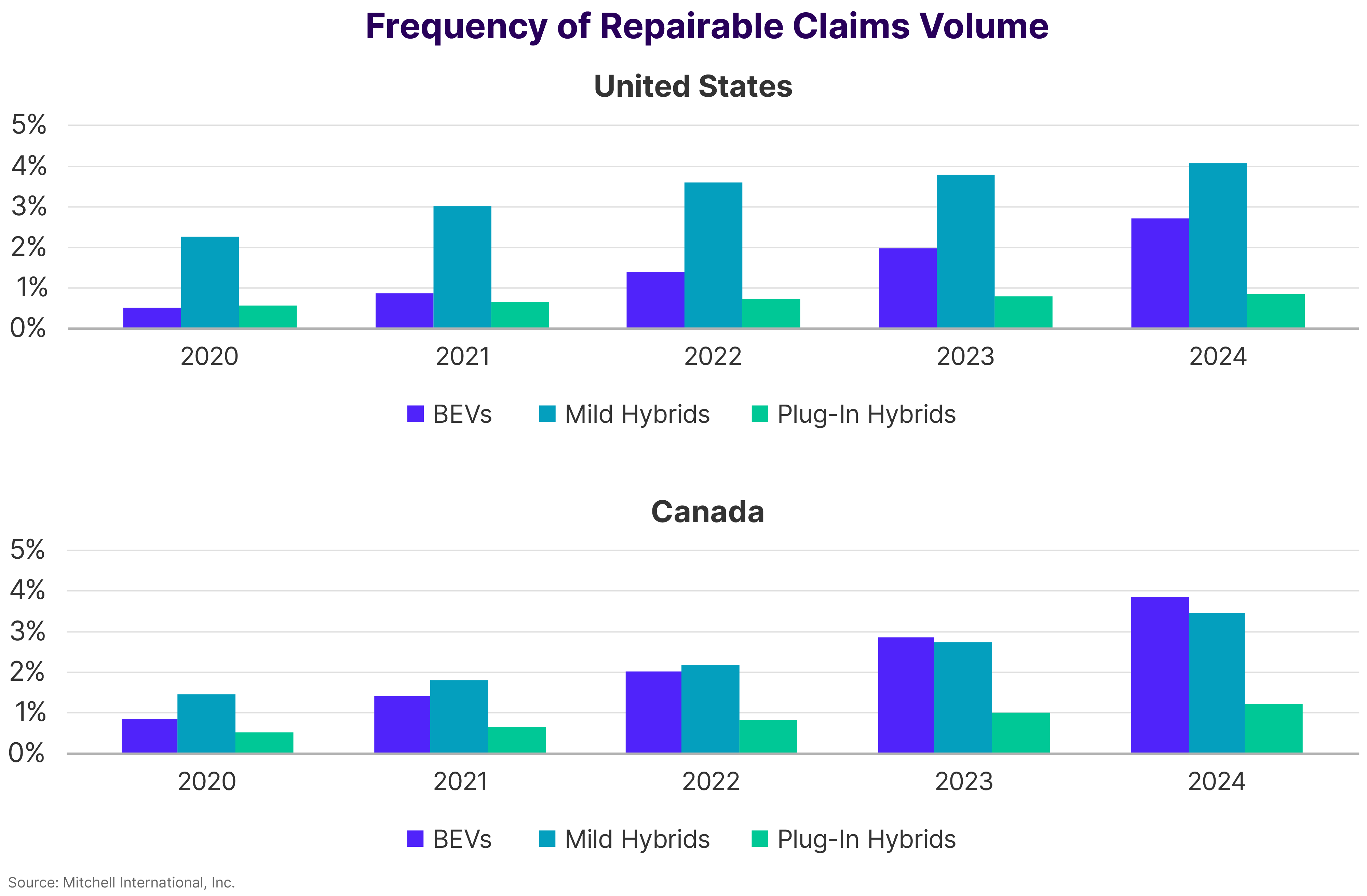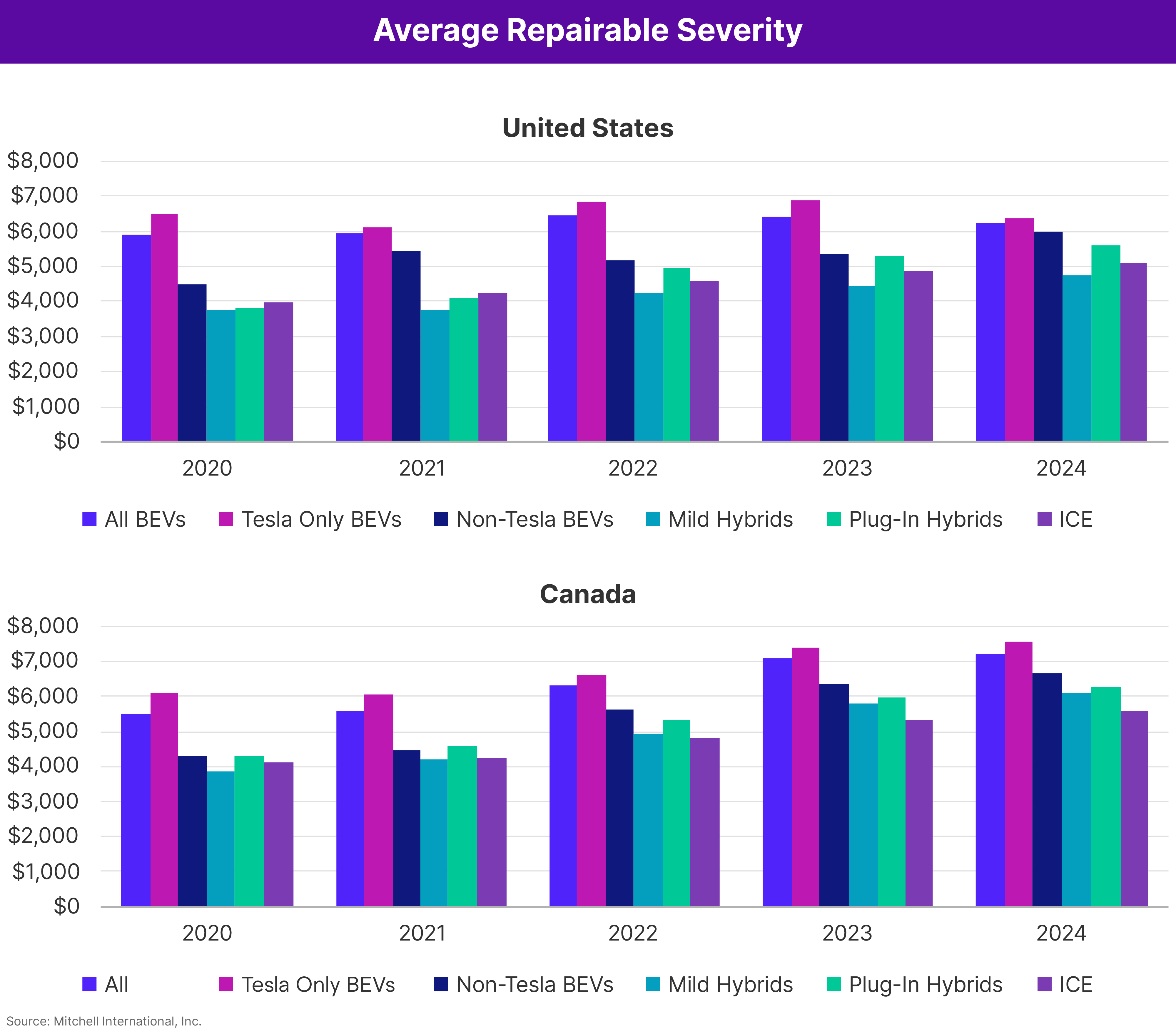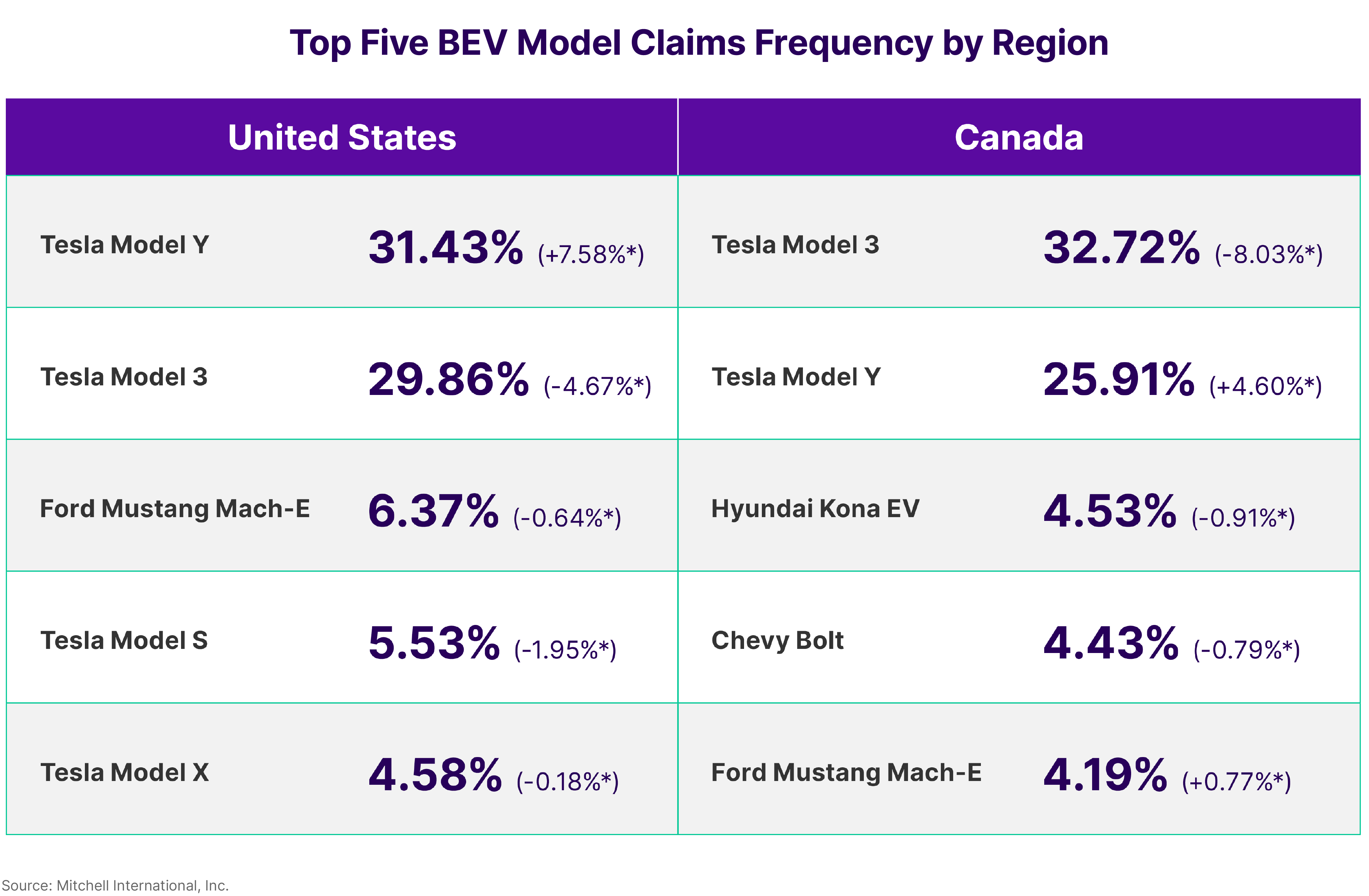Plugged-In: EV Collision Insights 2024 Year in Review
Claims frequency for collision-damaged, repairable battery electric vehicles (BEVs) rose to 2.71% in the U.S. and 3.84% in Canada in 2024, a year-over-year increase of 38% and 34% respectively. CNBC reported that BEVs and hybrids represented 20% of all new U.S. vehicle sales in 2024, and Cox Automotive is predicting that number to climb to 25% in 2025 despite U.S. policy changes that could hinder BEV adoption. According to Argonne National Laboratory and Electric Autonomy, there are over 100 different BEV models sold in the U.S. and 75 in Canada with dozens more expected by the end of this year.
U.S. total loss frequency for BEVs increased to 10.2% in 2024 (up from 8% in 2023). This is commensurate with other propulsion types, which also experienced a total loss gain of nearly two percentage points as vehicle values continued to decline and catastrophic claims activity increased in the second half of the year. Canadian BEV total loss frequency also increased from 5.9% in 2023 to 8.7% in 2024. BEV values declined more rapidly than any other propulsion type due to pricing changes brought on by several OEMs, improving manufacturing costs, increasing average vehicle age, and adding to consumer concerns about high-voltage battery health for used BEVs. At the close of the year, the average total loss market value for BEVs was $33,346 in the U.S. (down 22% from 2023) and $40,203 (CAD) in Canada (down 18.5% from 2023).
For repairable BEVs, average claims severity was $6,236 in the U.S. in 2024, a year-over-year decrease of 3%, and $7,241 (CAD) in Canada, a year-over-year increase of 2%. Mild hybrids (which combine an internal combustion engine, or ICE, with a small electric battery) and plug-in hybrids (which include a secondary ICE but rely on a larger, high-voltage battery as the primary propulsion source) had an average severity of $4,726 and $5,583 respectively in the U.S. and $6,104 (CAD) and $6,261 (CAD) respectively in Canada last year. In comparison, repairable ICE-powered automobiles had the lowest average severity of all powertrains in 2024 at $5,066 in the U.S. and $5,576 (CAD) in Canada. However, when looking at just newer ICE vehicles—which are similar to electrified alternatives in their complexity and cost to repair—average severity was much closer to that of BEVs and plug-in hybrids: $6,127 in the U.S. and $6,818 (CAD) in Canada.
As electrification increases in a vehicle’s architecture, so does the degree of system interconnectivity. This level of electrical complexity and digital communication results in an increased likelihood of disruption to sensitive components, potentially away from the primary point of impact. Consequently, the number of diagnostic fault codes increases, as does the need for ADAS calibrations. Last year, the per-estimate average for calibrations was 1.61 for BEVs, compared to 1.45 for ICE vehicles, 1.46 for mild hybrids and 1.58 for plug-in hybrids.
By the Numbers
*Difference between 2024 and 2023.
Subscribe Now
To subscribe to future issues of Mitchell's Plugged-In: EV Collision Insights report, please complete the form below.







